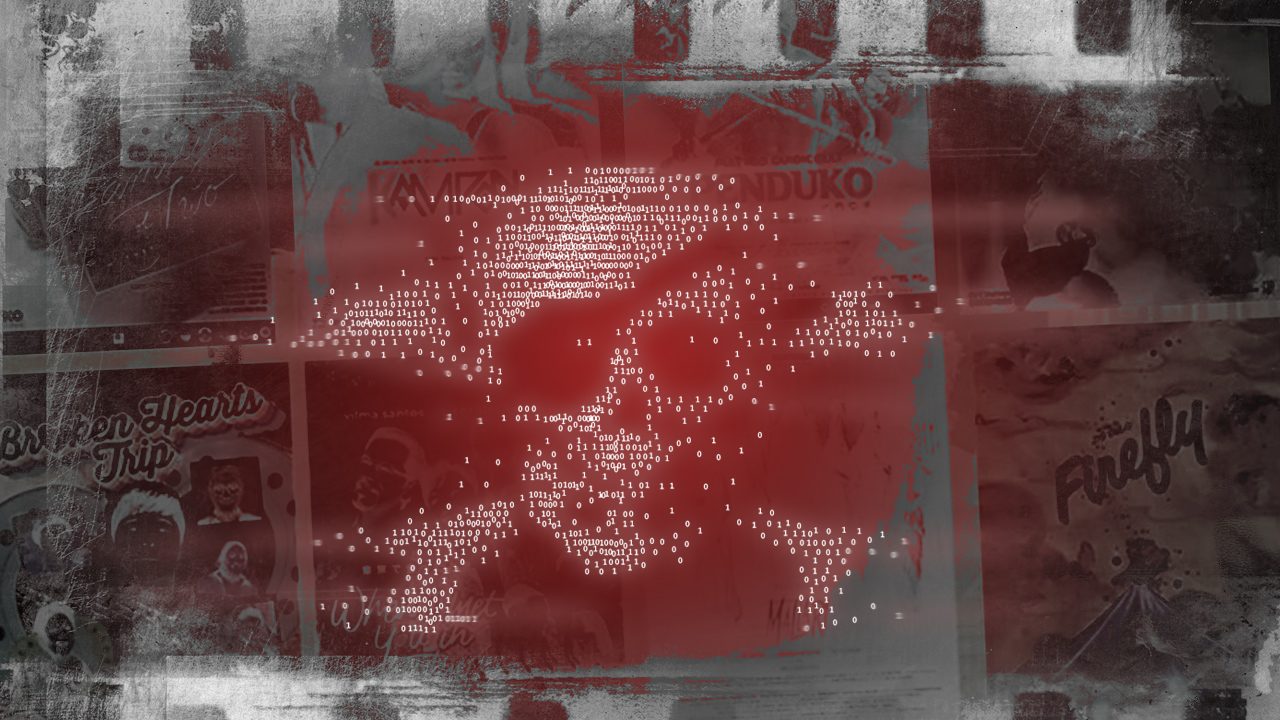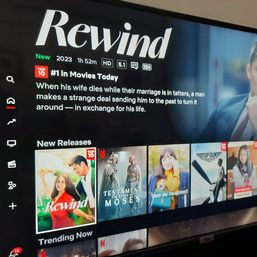SUMMARY
This is AI generated summarization, which may have errors. For context, always refer to the full article.

In 2019, independent drama John Denver Trending was released to critical acclaim, resonating with audiences across the region for its story that could happen to anybody. The titular character finds himself embroiled in a social media scandal after a video of him beating up a classmate is taken out of context and posted on Facebook for the world. Nearly five years after its release, John Denver trends once again – but this time, because a pirated copy of the film was passed around online.
Director Arden Rod Condez saw the Google Drive link on his own Twitter timeline – published by an archive account with over 20,000 followers – and was initially filled with frustration.
“In fact, had it happened maybe four or five years ago, I would have been furious,” he told Rappler in an interview.
But after giving it a bit of think, he decided he had to let go.
“A lot of people always ask me kung saan ba siya mapapanood or makikita, so ayan (where they could watch the movie, so) I guess it came to a point where I decided that other people should be able to watch it. Hindi na rin siya siguro maiiwasan (I guess it can no longer be avoided),” Condez said.
Soon, he broadcast his blessing on his official Twitter, acknowledging that he had unknowingly achieved something other directors consider a bucket list item: his work had finally been bootlegged.
This stance is shocking, coming from a creative in the field. Public service announcements and memeable ad campaigns have ceaselessly reiterated that piracy is stealing, stealing is against the law, and piracy is a crime. According to the Intellectual Property Office of the Philippines (IPOPHL), the underground industry of pirated media has resulted in P38.2-billion worth of losses and landed the country on international watchlists for IP rights. But as existing debates try to strike a balance between ensuring accessibility and adhering to ethical standards, one can only wonder: in today’s economy, who has the right to watch films, and why do we think we can dictate that?
The imitation game
A 2005 research work by Tilman Baumgärtel reports that the practice of optical media piracy accelerated in the Philippines back in the early 1990s, with the deregulation of information and the ease of law enforcement in the Global North. Technological advancements soon proliferated, such as access to the internet as well as computers, disk burners, and scanners that made it even easier to reproduce media. The shift to digital saw spliced, pitched, and distorted clips circulating on YouTube, TikTok, and messaging apps such as Telegram and Viber.
It’s no surprise then that a recent YouGov 2022 Piracy Landscape Survey revealed that the Philippines is not only the highest consumer of pirated content in the region but also the lowest consumer of legitimate media. Despite strict efforts to crack down on its operations, the pirated media industry prevails due to an unwavering demand for increasingly inaccessible films. With cinema ticket prices soaring to almost unjust prices and streaming platforms carrying limited options for viewing, piracy serves as the “great equalizer,” democratizing access to a scarce resource and the many benefits that come with watching it.
Hailing from a small town in Sultan Kudarat, Rappler’s in-house critic Lé Baltar grew up with very little access to any form of media.
“But in spite of that, there was piracy – pirated DVDs of Filipino action movies, mostly by FPJ,” she shared. “I don’t think it’ll be possible for me to learn everything I know about cinema without pirated media, because before you venture into writing about films, of course, you have to consume them first.”
Pirated DVDs also provided her family and neighbors with an avenue for community, as they congregated around their TV to watch. In a place without any theaters, this is as close to the sacred feeling of sitting across someone at a cinema.
While pirated markets would sell typical Hollywood blockbusters, albeit long before their domestic theatrical release, the streets of Quiapo and Metrowalk were also lined with hard-to-find titles: black and white movies from the silent era, cult classics from esoteric directors, and the occasional experimental fare too raunchy for wide releases.
“In my formative years as a filmmaker, I would go to Quiapo and look for the latest Cuaron and Fincher movies,” Condez shared. “Meron din dating mga collection na multiple films in one DVD tapos may mga theme siya, like a common actor or director. When I was 22, namili ako ng mga Fellini na film.” In an era where anything can disappear into the ether without proper preservation efforts, piracy keeps labors of love from turning into lost media.
(There also used to be pirated DVD collections featuring multiple films under specific themes, such as a common actor or director. When I was 22, I’d buy pirated Fellini films.)
Risky business
Of course, filmmaking is still an enterprise that banks on the time, talent, and effort of people who need to make a return on their investment. Even independent projects today require millions of pesos for production and distribution, which are frequently acquired through the generosity and support of funders and grants. If the revenues and turnout continue to dwindle, filmmakers will either be forced to produce low-budget output or lose the motivation and resources to work at all.
When Theodore Boborol was tapped by Star Cinema to launch the next generation of romantic comedy stars with Vince and Kath and James, he was disappointed by the instances of piracy he witnessed during the 2016 Metro Manila Film Festival.
“Nahuhurt ako kasi pagkatapos pa lang ng premiere, after one day, makikita mo na siya sa Facebook. Nakakatakot for my career lalo na kapag nakakaapekto yung box office sa kita ng movie. How would the producers trust me? How would they get me again?” he said.
(I would feel so hurt, because just a day after the premiere, you’d see the film uploaded on Facebook. Piracy was frightening for my career, especially when it affects the movie’s box office sales.)
Government officials have failed to adapt existing anti-piracy regulations for the digital age: to this day, the Intellectual Property Code that was enacted in 1998 has not been amended to encompass online content.
“In terms of trying to monitor [online piracy], I doubt if the government has the technology or the sense of urgency,” Boborol lamented. “Dati, nakakakita ka pa ng mga OMB (Optical Media Board) na nangunguna sa mga raid, or mga anti-piracy commercials na pinapaikot dati. Pero ngayon, every time na may pirated online, ang IT department [ng production company] ang in charge sa paghuli.” Offenders are rarely, if ever, caught, and only have to switch to another account under a different username to evade charges.
(Back in the day, the Optical Media Board still monitored acts of piracy and conducted raids, and there used to be anti-piracy commercials on air. But now, every time something is pirated online, it’s the production company’s IT department in charge of catching the culprits.)
While it’s easy to immediately peg the responsibility on individual actors alone, it seems unfair to punish them without addressing why they resort to piracy in the first place. Currently, some state initiatives in place include “anti-piracy campaigns, capacity building, and information exchange” – all of which fail to address the issue of inaccessibility and reach crowds in far-flung areas who may need these interventions the most.
Do the right thing
An obvious way to address the issue is to explore and expand alternative distribution methods. As Condez posed, “If gusto ng mga tao na manood ng pelikula, bakit hindi ginagawan ng paraan para maabot (If people want to watch movies, why aren’t efforts being made to make movies accessible)?”
And yet, screenings are often concentrated in prominent malls in urban areas, failing to reach public venues like town plazas and community halls, in classrooms, or fundraising events. Condez’s own experience while promoting John Denver Trending proves that these ideas could be sustainable: “After Cinemalaya, we rented a LED wall and sound system and in one day, we had four screenings from morning until evening. Six thousand people came para lang manood kasi kilala nila yung bida (just to watch and because they knew the lead actor) and it was shot in our hometown. Meron talaga silang interes (There was real interest),” he shared.
This also requires improving our currently non-existent system of selling and promoting local films, both to streaming platforms and international distribution companies.
“Films from other countries like those shown in [film festivals] Cannes and Berlin, meron silang mga distributor and sales agent agad na magbebenta sa kanila sa iba’t ibang film territories (they already have distributors and sales agents who would sell the film to different film territories),” Condez said.
Unfortunately, clients here often lowball directors and producers: Condez recalls a popular figure in the industry who had wondered why Filipino films have to be made in the first place when there was supposedly no international demand.
Such mindsets reveal the deeper roots of the issue at hand: Filipino society’s lack of appreciation for the arts. Despite the fact that creative industries accounted for 7.3% of the economy and amounted to P1.6 trillion last 2022, artists have historically been undervalued and their concerns have gone underrepresented.
“Support should really happen from the beginning, not just when films are produced,” Baltar said. “Alongside financial support, pathways for filmmakers should be in place, from pitching to marketing.”
If the government fails to adjust budgets to uplift filmmakers from all over the country and pass the necessary legislation to protect their rights, the cycle will only repeat itself.
“The problem stops for good when the government finally understands the merit in actively shaping our culture and our cinema, and finally cares for its artists and its people. But to this day, we don’t really understand its roots,” Baltar shared.
Overall, it is difficult to lean towards any extreme when assessing the topic of piracy: sure, the end doesn’t justify the means, but what other means do these people have? We would love to live in an ideal world where everyone can afford the P600-price attached to a single ticket or secure career opportunities that didn’t require them to camcord for easy money. But this is reality – and unless we accept the very real motivations behind the dissemination of pirated media, we won’t be able to address the problem at the source.
“Siguro, titigil lang ang piracy pag mayaman na ang tao, pag meron silang ibang opportunity to earn,” Boborol said. “Feel ko naman yung namimirata at nagcicirculate ng movies sa Facebook at nagpapasend sa GCash, hindi na kasi nila naiisip ang appreciation for the film or yung value niya as an art form. Iniisip nila na kailangan nilang mabuhay at kailangan nilang kumita.”
(I suppose piracy will only come to an end when people become well-off, when pirates find other means to earn. I feel like pirates and people who circulate movies on Facebook or through GCash don’t really factor in how much they appreciate the film or the film’s value as an art form. What matters to them is that they need to make a living.) – Rappler.com
Angel Martinez is a cultural critic and social trendspotter with a degree in Communications Technology Management from Ateneo de Manila University. Her essays on the internet, identity, and their intersections have been featured in VICE, i-D, Rappler, CNN Philippines, and The Philippine STAR. When she’s not knee-deep in the written word, she enjoys reciting the entire press conference scene from Notting Hill and cuddling with the two best dogs in the world.
Add a comment
How does this make you feel?







There are no comments yet. Add your comment to start the conversation.